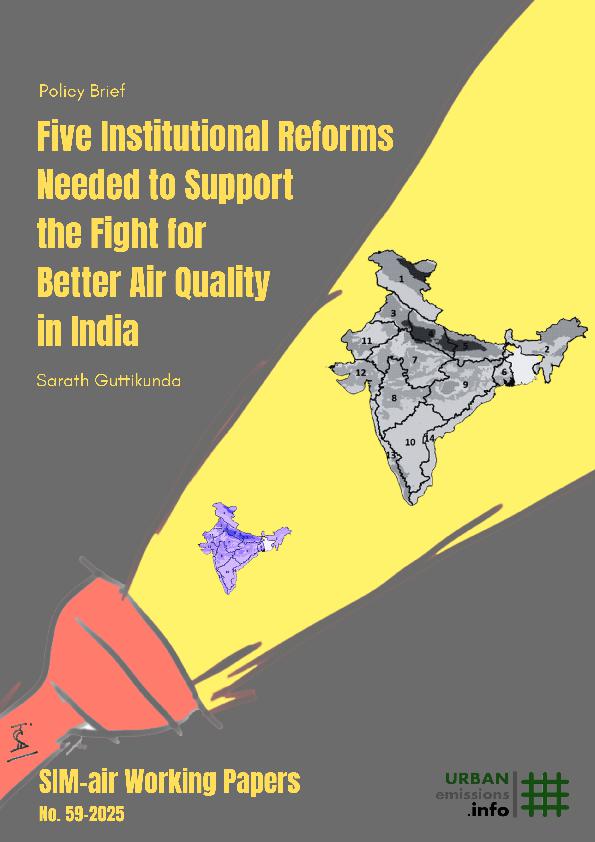 Click on the image or here to download the full document.
Click on the image or here to download the full document.
[Citation: https://dx.doi.org/10.2139/ssrn.5392152]
SIM-air No. 59-2025: Five institutional reforms needed to support the fight for better air quality in India
Summary:
Polluted air is injurious to human health, a fact supported by numerous studies. In India, while much of the focus has been on urban centers and metropolitan cities like Delhi, Mumbai, Kolkata, Hyderabad, Chennai, and Bengaluru, the impact of pollution is felt across the country, especially in the landlocked Indo-Gangetic Plain. Starting with the clean air act was introduced in 1981, many measures were implemented to control air pollution, ranging from institutional changes to technological advancements, economic measures, and efforts to alter social behavior to influence change on the ground. The fight against air pollution is a long and arduous affair, as demonstrated by examples from the US and Europe. We have learned valuable lessons from how cities like London, after the 1950s fog episodes, and Los Angeles, with its notorious smog, transformed themselves into models for effective air pollution management.
This process has no quick fixes; it takes time, often decades, to achieve significant change. There are many lessons to be learned from different regions that can be customized for India’s unique needs. The work ahead will be difficult, but the bottom line remains — better air quality can only be achieved if emissions at all known sources are controlled, if not eliminated. Fundamental institutional changes are required to jumpstart this fight and ultimately result in clean air for all. Here are five core institutional reforms we believe are needed for air quality management at the urban, regional, and airshed levels to move forward with emissions management.
- Merging national standards with WHO guidelines
- Differentiating better air quality and net-zero emissions for climate change
- An aggressive push for more ambient pollution monitoring
- Insisting on the cities to build an energy and emissions baseline for accountability
- Unification of emission inventories at the national scale
The methodologies employed in this study are documented under publications. These methodologies explainers are included in our primers, presentations, plug and play tools, benchmarking notes, instructional videos and more, openly available @ https://urbanemissions.info/tools.
Our working papers describe case studies where we applied the SIM-air family of tools, document general notes on emissions and pollution modeling and present our reviews on various topics related to air pollution analysis.
